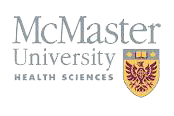Acupuncture is used to treat obesity. The results are described in this systematic review by Dr. K. Trinh, Chair, Medical Acupuncture Program, Evidence-based approach; Chair, Interviews, Medical School Admissions, McMaster University
Acupuncture for obesity: A systematic review by Dr. K. Trinh, Chair, Medical Acupuncture Program, Evidence-based approach; Chair, Interviews, Medical School Admissions, McMaster University and et al.
ABSTRACT
Background
Obesity has become a major health challenge for both patients and health practitioners. Well known methods of weight reduction such as diet and exercise are often difficult to comply with because of lifestyle and quality of life issues. Other methods such as diet pills or surgery can have serious side effects and often do not show long-term benefit. In an attempt to find a less invasive and effective modality of treatment, traditional Chinese medicine; particularly acupuncture and auriculotherapy; has become a topic of research in this field. The authors have conducted a review of the current evidence regarding the use of auricular and body acupuncture in the treatment of obesity.
Objectives
To determine the effects of auricular and body acupuncture on weight loss in obese individuals.
Search strategy
We searched AMED, CINAHL, EMBAS, Medline and PsychINFO from their beginning to March 2008. We used a search strategy as in appendix A.
Selection criteria
Any published trial using randomized (RCT) assignment to the intervention groups, in full text were included.
Data collection and analysis
All articles were either included or excluded in the review based on certain criteria by two separate assessors. Included articles were then evaluated for trial methodological quality by two different assessors using the Jadad criteria. Articles were also assessed for use of intention to treat and given a Cochrane grade. Consensus was used to resolve disagreements. Because of clinical heterogeneity, we were not able to combine studies using random-effects meta-analysis models.
Main Results
Overall, the quality of the studies was low with only two studies were considered to be of high quality by the Jadad scale. Because of the clinical heterogeneity of the studies reviewed, meta-analysis was not used. However, we found evidence in favour of acupuncture over exercise in the treatment of obesity but the sample sizes of these studies were small. There were also moderate evidence in favour acupuncture over a combination of diet and exercise, and limited evidence in comparison to diet alone or “inactive” treatment. There was also limited evidence showing no difference between acupuncture and minimal acupuncture in the treatment of obesity.
Author’s conclusion
Due to the limitations of the published studies in this field, the authors of this review were unable to make any firm conclusions with respect to the efficacy of acupuncture in the treatment of obesity. Therefore, it is necessary to conduct a large high quality double blinded randomized control trial in order to determine whether acupuncture should be used a treatment modality to achieve weight loss in obese individuals.
